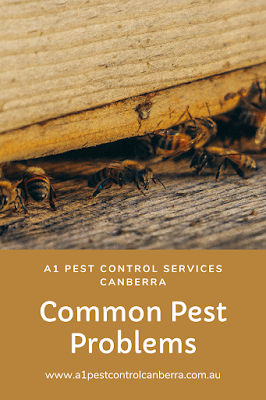Wasp and Bee 101: What is the Difference between Wasp and Bees?
The two of them have parts (some of them), they all gather a mean bite when activated, and they have a typical propensity for sweet things (one makes nectar, different takes nectar from honey bees or kills the honey bees themselves for their sweet-tasting bodies), how unique would they be able to be?
Wasps and honey bees are cousins, involving the Hymenoptera request alongside subterranean insects. Wasps are smooth shots while honey bees are furry push-overs, inclining toward the flavour of blossoms over different bugs. One is the tracker, the other the pursued—one velocity around as various strolls and stops to take in the pleasant ambience. While a Ford Camry and a Ferrari 488 are the two vehicles, they're not similar in class and the equivalent can happen prepared for Bees and wasps.
Wasp Profiles

European Wasp/(Vespula Germanica)
Appearance: Black on their beginning with yellow markings and bright yellow on their back with dark stripes. They added must bright yellow legs.
Size: Worker wasps will develop from 1.2 to 1.7 centimetres long, while sovereigns are a lot bigger yet seldom seen outside the hive. Wasps can be effectively recognized from honey bees at first sight, as they are less bushy and have longer, less fatty evidence.
Lifecycle: They mate in Autumn, and while winter, the whole settlement bites the dust aside from the sovereign, which arises in spring to start laying eggs. The labourer wasps will begin to construct the home and will ordinarily complete it in summer. Specialist wasps will live for half a month. However, sovereigns will live for around a year.
Natural surroundings: In the wild, European wasps ordinarily make their homes in the ground. However, in structures, they can be found inside rooftop spaces or dividers and under the overhang.
Appearance: Black with light yellow stripes and a yellow face, not as brilliant as the European wasp.
Size: Worker wasps develop from 1 to 1.5 centimeters long, with sovereign wasps becoming bigger. Paper wasps have long, meagre legs and a thin body.
Lifecycle: There usually are around two sovereigns in a paper wasp settlement. Homes are either assembled or reused by specialist females in the spring, who then, at that point, produce more labourer females all through the mid-year. Towards the finish the mid-year and in early harvest time, the male specialists are created, and the sovereigns rise out of hibernation.
Territory: Paper wasps are discovered up and down the east shore of Australia and in South Australia. The labourer's wasps assemble plant stems and dead wood, which they blend in with salivation to make the paper-like material of their homes. Their typical habitat is in shrublands, yet around human residences, their homes can be found inside rooftop spaces, under the overhang and connected to the outside structures.

(Sceliphron Laetum)
Appearance: They are dazzling yellow with huge dark groups around the mid-region and chest and some dark markings on the legs.
Size: Slightly more extensive than their European or yellow coat relatives, expert mud wasps will increase from 1.7 to 3 centimeters long, with the sovereign being the biggest in the hive. The mud wasp can be effectively recognized by its flimsy, stick-like petiole projecting from the chest to the mid-region.
Lifecycle: The female will develop a mud home utilizing soil and water gathered from close by. After mating, the eggs are set in discrete compartments of the home with a few deadened creepy crawlies for the hatchlings to benefit from when it hatches. In the wake of arising as grown-ups, the youthful wasps start a similar cycle once more.
Natural surroundings: They fabricate settles out of gathered mud, mainly dirt mud. You will discover them inside divider and rooftop holes and under the overhang, where they are shielded yet have had immediate admittance to an external mud source.
Yellow Jacket Wasp

(Vespula Germanica)
Appearance: Black on their front with yellow showings and radiant yellow on their back with dark stripes. They additionally have bright yellow legs.
Size: Worker wasps will develop to around 1.3 centimeters long, while sovereigns are a lot bigger however seldom seen outside the hive. Yellow coat wasps are practically the same in appearance as European wasps, aside from they have three small dark spots on their clypeus (face).
Lifecycle: The sovereign will start a home, and it will develop all through late fall and summer as increasingly more working drones develop. Labourer wasps will just live for half a month, yet sovereigns will live for around a year or considerably more. In contrast to their European partners, yellow coat wasps in Australia will regularly endure winter to shape a bigger, polygynous home for the following year.
Environment: In the wild, yellow coat wasps, for the most part, make their homes subterranean in the dirt. However, in structures, they can be found inside rooftop spaces or dividers and under an overhang.
Also visit:





Comments
Post a Comment